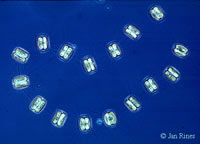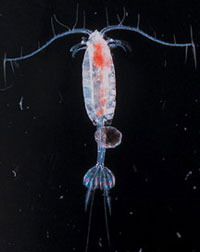


|
The Project
|
The Project: Research Questions
This project is called “LOCO”, meaning “Layered Organization in the Coastal Ocean”. It is made up of many investigations. The project’s overall hypothesis is that thin layers of plankton are related to the physics and chemistry of the ocean. The project’s research question is “How are thin layers formed, maintained, and erased?” Once that answer is understood, the scientists begin to understand how they can predict where other thin layers may be found. The scientists on the R/V New Horizon will measure the role of ocean currents in making the patterns of plankton within the thin layers. The scientists will measure the amount of time the thin layers of plankton last and how far the layers extend horizontally. The scientists want to know the answers to these questions: How far do the thin layers extend horizontally? (Think of a thin pancake and how far it spreads from one side to another. That is the horizontal measurement). How many zooplankton will group around the thin layers of phytoplankton? (How many zooplankton crowd around that salad bar?) As the speed (velocity) of the ocean currents change at different depths, how do the thin layers of plankton respond? (Do the layers grow horizontally? Do the layers get thinner?) Most of the scientists on the R/V New Horizon are biologists. Chemists, physicists and other biologists are also working on the project at the same time in other parts of Monterey Bay. This is an example of how oceanography works: many scientists with special knowledge work together to find answers to research questions. This project is funded by the Office of Naval Research, Grant # N00014-01-1-0277 to T.J. Cowles at Oregon State University
|




